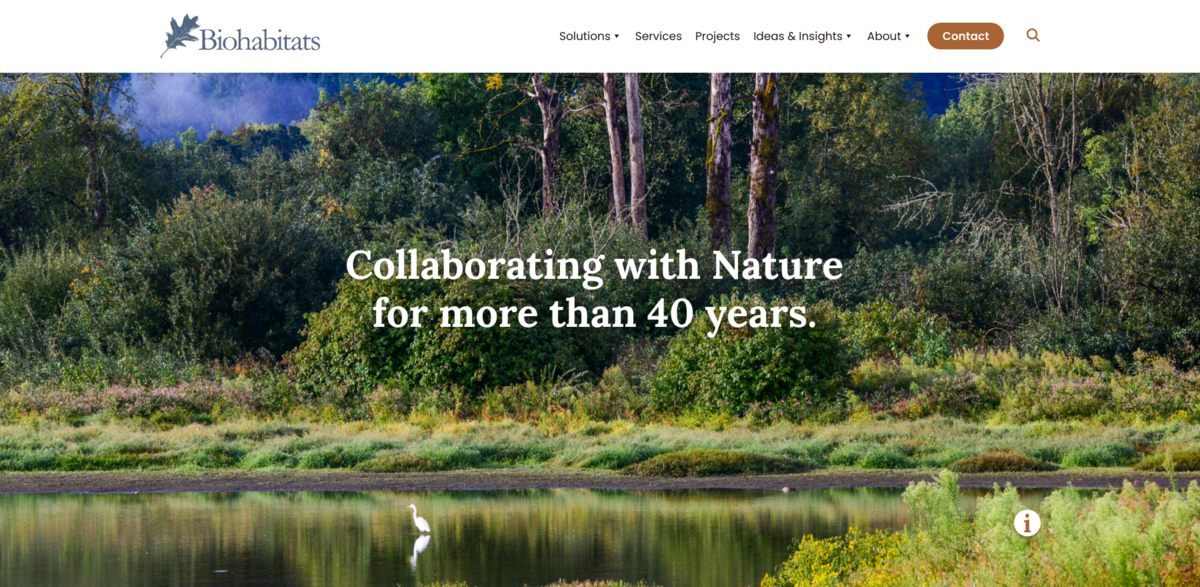What the Project Is All About
Imagine former sewage lagoons transformed into a thriving wetland complex that not only provides wildlife habitat but also offers recreational opportunities—all while cooling and cleaning water discharged into the Tualatin River. That’s exactly what’s happening at Fernhill Wetlands in Forest Grove, OR. Meanwhile, along the shores of Sandusky Bay, a network of remnant wetlands is being stitched back together, launching one of the largest landscape-scale interventions in the Great Lakes region through the Sandusky Bay Restoration Initiative Nutrient Reduction Wetlands. And over in New Jersey, stormwater is no longer just a problem; it’s a resource. At Teaneck Creek Park Wetland Restoration, ecological function is returning, creating a new place for exploration and learning in a densely developed county. Not to be outdone, Oregon’s Tualatin River watershed saw a defunct dam removed at Balm Grove, opening 35 miles of prime spawning habitat for winter steelhead, Pacific lamprey, and other anadromous species. These projects showcase a broad spectrum of ecological restoration efforts, from fisheries habitat recovery to living shorelines and everything in between.
Main Benefits of These Ecological Projects
These projects bring a ton of benefits to the table, including:
- Opening 35 miles of prime spawning habitat for key fish species.
- Creating large-scale wetland complexes that improve water quality and provide wildlife habitat.
- Transforming stormwater from a nuisance into a valuable ecological resource.
- Reconnecting floodplains and restoring natural river channels.
- Enhancing biodiversity through restoration of salt marshes, submerged aquatic vegetation, and shellfish reefs.
- Implementing soil bioengineering and soil regeneration techniques to improve land health.
- Managing invasive species and nuisance wildlife to protect native ecosystems.
- Supporting mitigation banking and natural resource damage assessment restoration.
Restoration Techniques and Approaches
The projects employ a wide array of restoration techniques that are both innovative and grounded in ecological science. From natural channel restoration and regenerative stormwater conveyance to forest restoration and reforestation efforts, each approach is tailored to the unique needs of the site. Soil bioengineering plays a crucial role in stabilizing banks and improving soil health, while living shorelines and submerged aquatic vegetation restoration help protect coastal and freshwater ecosystems. The use of floating wetlands and salt marsh restoration further enhances water filtration and habitat complexity. These methods work together to bring back the natural balance and resilience of ecosystems.
Focus on Biodiversity and Habitat Enhancement
One of the standout features of these projects is their commitment to biodiversity. Whether it’s restoring fisheries habitat, enhancing riverine environments, or rebuilding shellfish reefs like oyster beds and mussel beds, the goal is to create thriving ecosystems that support a wide range of species. Forested and emergent wetlands restoration, along with riparian and floodplain restoration, provide critical habitat corridors for wildlife. Even specialized habitats like bogs, fens, and pocosins are being restored, ensuring that rare and sensitive ecosystems get the attention they deserve. This holistic approach helps maintain ecological integrity and supports species recovery.
Community Engagement and Educational Opportunities
These restoration projects don’t just benefit the environment—they also create spaces for people to connect with nature. For example, Teaneck Creek Park Wetland Restoration offers a new place for exploration and learning in a densely developed area. Recreational opportunities at Fernhill Wetlands invite the public to experience the benefits of ecological restoration firsthand. By turning formerly degraded or underutilized lands into vibrant natural areas, these projects foster community stewardship and raise awareness about sustainability, conservation planning, and regenerative design. It’s about building a relationship between people and the environment that lasts.
Project Impact on Sustainable Development Goals (SDGs)
- SDG 6: Clean Water and Sanitation – through water quality improvement and stormwater management.
- SDG 13: Climate Action – via carbon sequestration in restored forests and wetlands.
- SDG 14: Life Below Water – by restoring aquatic habitats and fish passage.
- SDG 15: Life on Land – through habitat restoration and biodiversity enhancement.
- SDG 11: Sustainable Cities and Communities – by creating green infrastructure and recreational spaces.
- SDG 12: Responsible Consumption and Production – via mitigation banking and natural resource damage assessment.
Looking Ahead: The Future of Ecological Restoration
As these projects demonstrate, ecological restoration is more than just fixing what’s broken—it’s about reimagining landscapes to support both nature and people. With a B Corp score of 100.7, this initiative sets a high standard for sustainability, biodiversity, and regenerative design. The integration of green infrastructure, conservation planning, and design-build approaches ensures that restoration efforts are effective and lasting. Moving forward, continued innovation in soil regeneration, invasive species management, and wildlife corridor restoration will be key to adapting to changing environmental conditions. It’s an exciting time for ecological restoration, where science, community, and creativity come together to build a healthier planet.





















